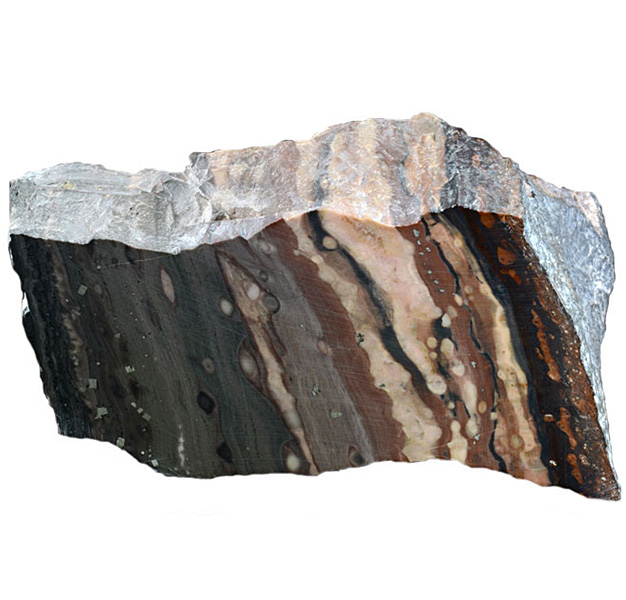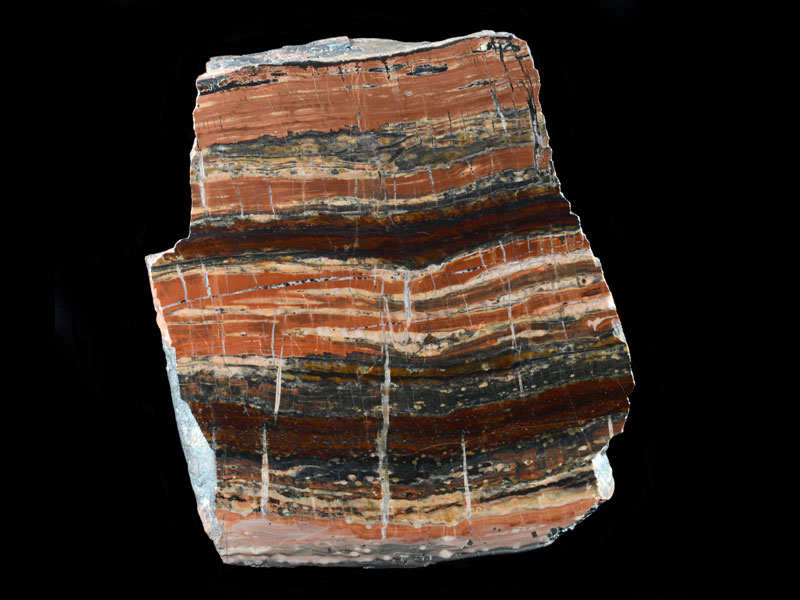
Fact sheet
This ore specimen is from the largest manganese deposit in the United Kingdom. It occurs in silicates and carbonates within a hard cherty bed near the base of the Cambrian-age Haffoty Formation in the mountains inland of Harlech, North Wales. It is thought that the ore formed in a shallow marine basin under reducing conditions, where the manganese in the sediment column was extensively remobilised and deposited at the sediment-water interface as manganese carbonate (rhodochrosite). Although the rock was originally of sedimentary origin, the deposit has been modified by diagenesis and greenschist facies metamorphism, crystallising a Mn-rich form of garnet known as spessartine. This specimen can be found in the National Museum Wales.
The thin section illustrates the very fine-grained nature of the rock and the deformation of the fine sedimentary banding around the nodules of calcium-manganese-rich carbonate (calcian rhodochrosite) that grew during metamorphism. The red bands consist of a fine-grained intergrowth of spessartine and rhodochrosite (plus quartz). The pink colour is derived from hematite inclusions in the spessartine. Yellow bands have a similar mineralogy but do not have the hematite inclusions. Bands that appear bluish-black in the hand specimen consist of intergrowths of rhodochrosite and spessartine with grains of a black opaque phase (MnO2). The chocolate brown bands in hand specimen are mainly intergrowths of rhodochrosite and alleghanyite, a hydrated Mn-rich silicate. The black (opaque) mineral with strain fringes is pyrite.
For a detailed review of this mineralisation, see: Cotterell (2013) J. Russell Soc., 16, 39-51.
The United Kingdom Virtual Microscope (UKVM) collection consists of igneous, sedimentary and metamorphic rocks from around the UK.
It is intended as a teaching resource, helping to tell the story of the common rock types and how they form, and reflecting the history of the UK at the margins of the continent of Europe. The collection is a series of teaching sets, for example igneous rocks from the North Atlantic Igneous Province and SW England; high-temperature metamorphic rocks from Scotland and low-temperature metamorphic rocks from Wales; and sedimentary rocks, including English limestones and sandstones.







